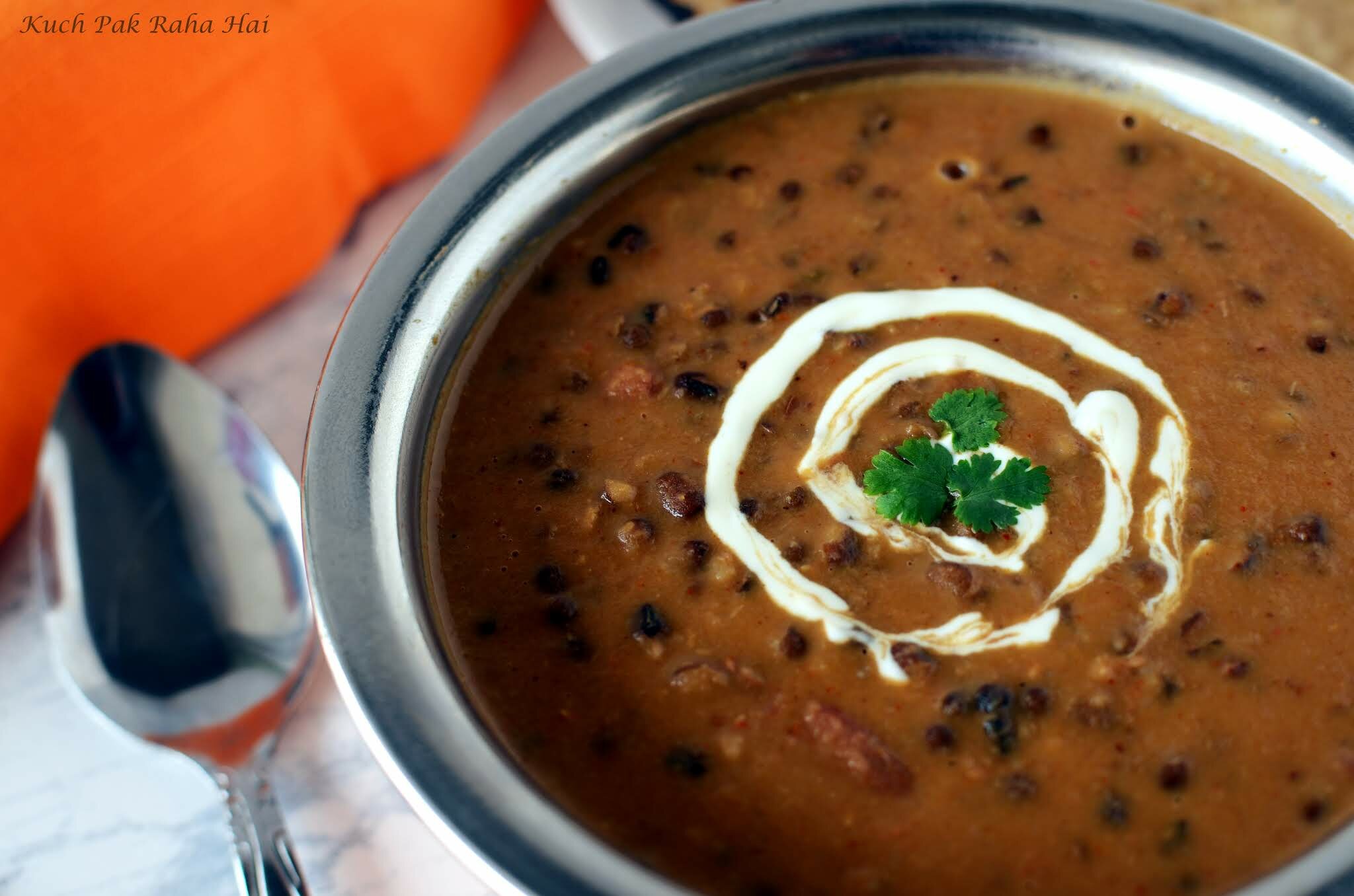
“Dal Makhani” is a rich delicious blends of lentils, spices and butter (or “makkhan” in hindi). The fattiness incorporated in this recipe comes from generous use of butter or cream which is the highlight of this dish.
This Dal which basically originated from Punjab region in India, has a rich creamy texture with melt in the mouth lentils. Two lentils which are used in this recipe are – Whole Urad Dal (Black Matpe Beans) and Rajma (Red Kidney beans). Dal Makhani remains one of the popular choices in Indian restaurants especially for the vegetarians.
I don’t remember going to an Indian restaurant and skipping Dal Makhani from the order ever. If we are ordering Indian main course, then Dal Makhani has to be there. Even if someone thinks of ordering “Yellow” dal, everyone else on the table instantly shakes away his/her thought by saying “Ab restaurant aake bhi ghar wali dal khayenge kya“.
In this recipe I have used butter/ghee/cream quite liberally. However, if you are health conscious and count your calories before eating anything then you can still enjoy this Dal by skipping the fat used during the cooking and garnishing.
Just use the little fat in tadka and you will still find this Dal to be so tasty. The secret behind the heavenly taste of this Dal is “Slow cooking”. More you give it time to cook on low flame with gradual addition of butter/cream, better it will taste.
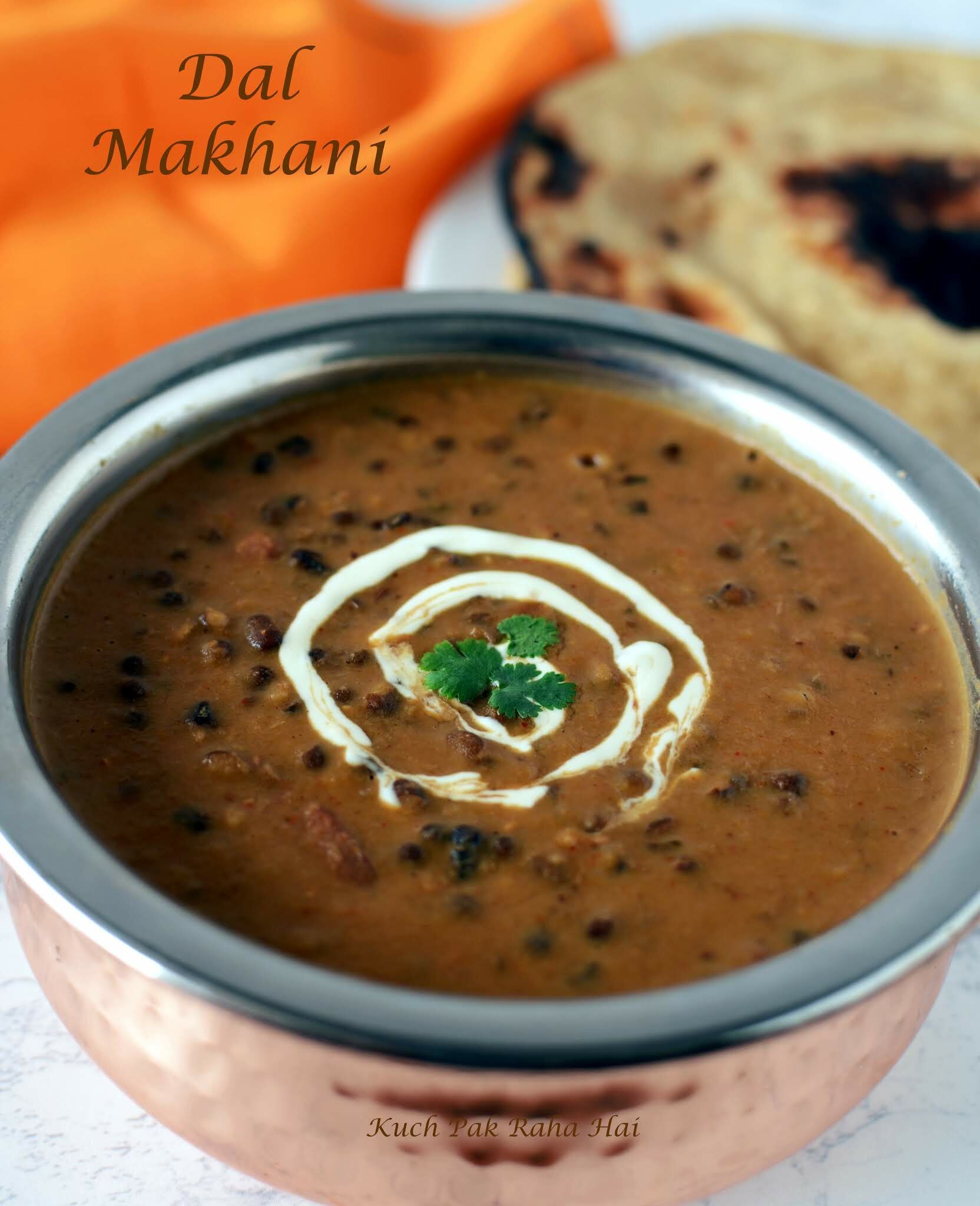
More Indian curry lentil recipes:
- Dal Palak (Spinach Lentils)
- Masoor Dal (Red Lentil Curry)
- Chana Masala (Chickpea Curry)
- Rajma Masala (Kidney Beans Curry)
Ingredients:
- Sabut Urad Dal (Black Matpe Beans)- 3/4 cup
- Rajma (Kidney beans)- 3 tbsp
- Water- 4 cups
- Turmeric Powder- 3/4 tsp
- Salt- 1 tsp (to taste)
- Whole Black Cardamom* (Badi Elaichi)- 2
- Ghee / Oil- (1 + 1/2) tbsp
- Bay Leaf (Tej Patta)- 1
- Cinnamon- A small piece
- Asafoetida (Heeng)- A pinch (optional)
- Onion- 1 medium
- Ginger paste- 1 tsp
- Tomatoes- 2 large
- Tomato Puree- 3 tbsp
- Green Chilli- 1
- Cumin Powder (Jeera)- 1 tsp
- Red Chilli Powder- 1/2 tsp
- Garam Masala- 1/4 tsp
- Coriander Powder (Dhaniya Powder)- 2 tsp
- Dry Fenugreek (Kasuri Methi)- 2 tsp
- Heavy Cream- 3 to 4 tbsp
- Butter- 2 tsp
- Cilantro (chopped)- For garnishing
Notes:
- *If you don’t have black cardamom, you can use 1 or 2 whole green cardamoms.
- Instead of whole cinnamon, you can use a big pinch of cinnamon powder.
- The above recipe yields 4 to 5 servings.
Directions:
Step 1:
Transfer sabut urad and kidney beans in a bowl and rinse 2-3 times till water turns clear. Soak in fresh water for at least 7-8 hrs or better overnight.
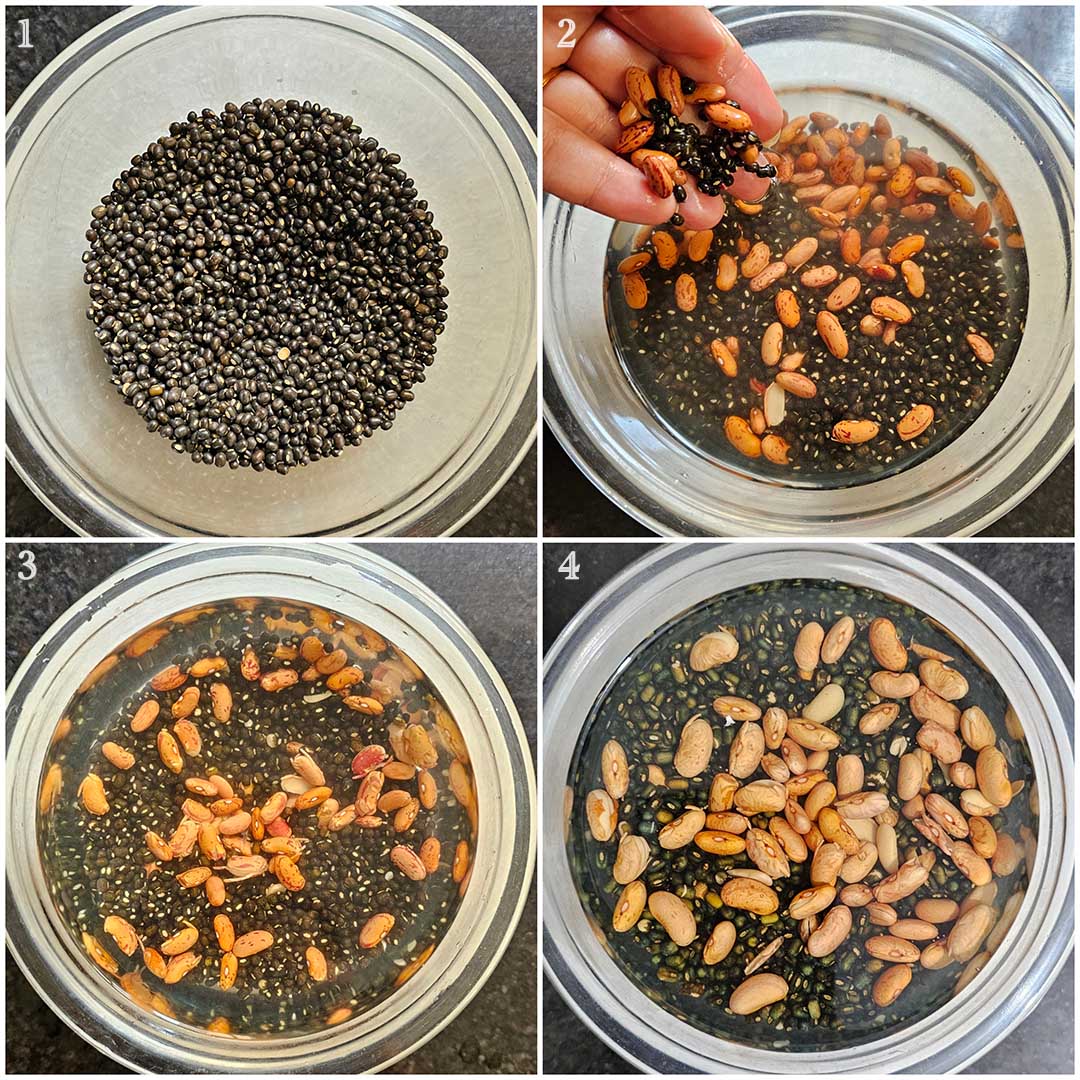
(The lentils softens by absorbing water with time (image 4), making them faster to cook and easy to digest.)
Step 2:
Drain soaked lentils over a colander & discard the water. Transfer them in a pressure cooker and add 4 cups of water, salt, turmeric powder and black cardamom (if using). Pressure cook for 1 whistle and simmer for 15 minutes (image 1 & 2 below).
Once the pressure is released naturally from cooker, open the lid and check if the lentils have softened by pressing between your fingers (image 3). If they are still undercooked, pressure cook for 4-5 minutes more. If you have soaked dal for lesser time, you will have to cook them for longer.
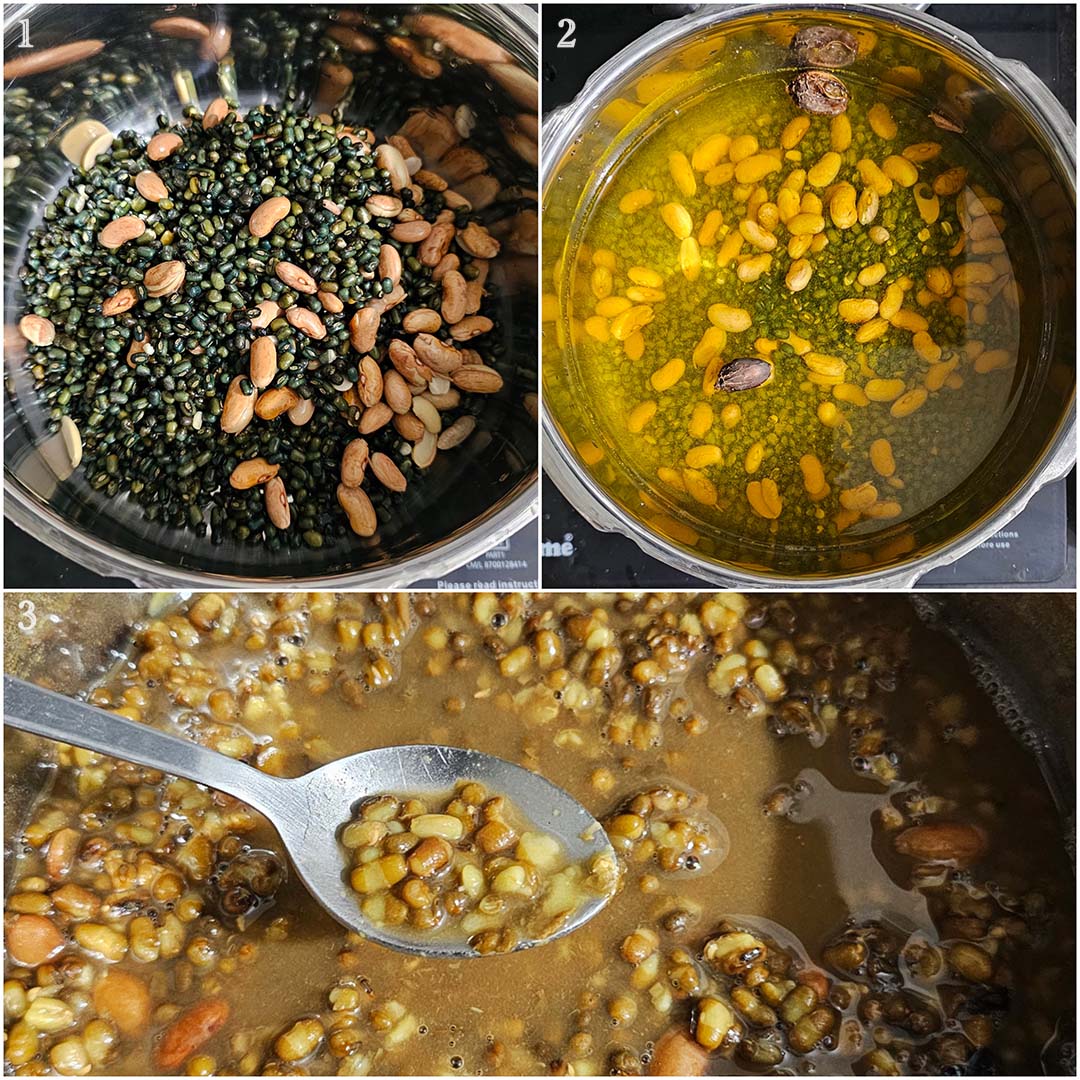
Step 3:
Puree onions in a blender jar. Heat ghee in a pan. Add bay leaf, cinnamon, green cardamom & heeng (if using). Saute for 30-40 seconds till spices become aromatic. Add onion puree and cook till it turns slightly pink in colour.
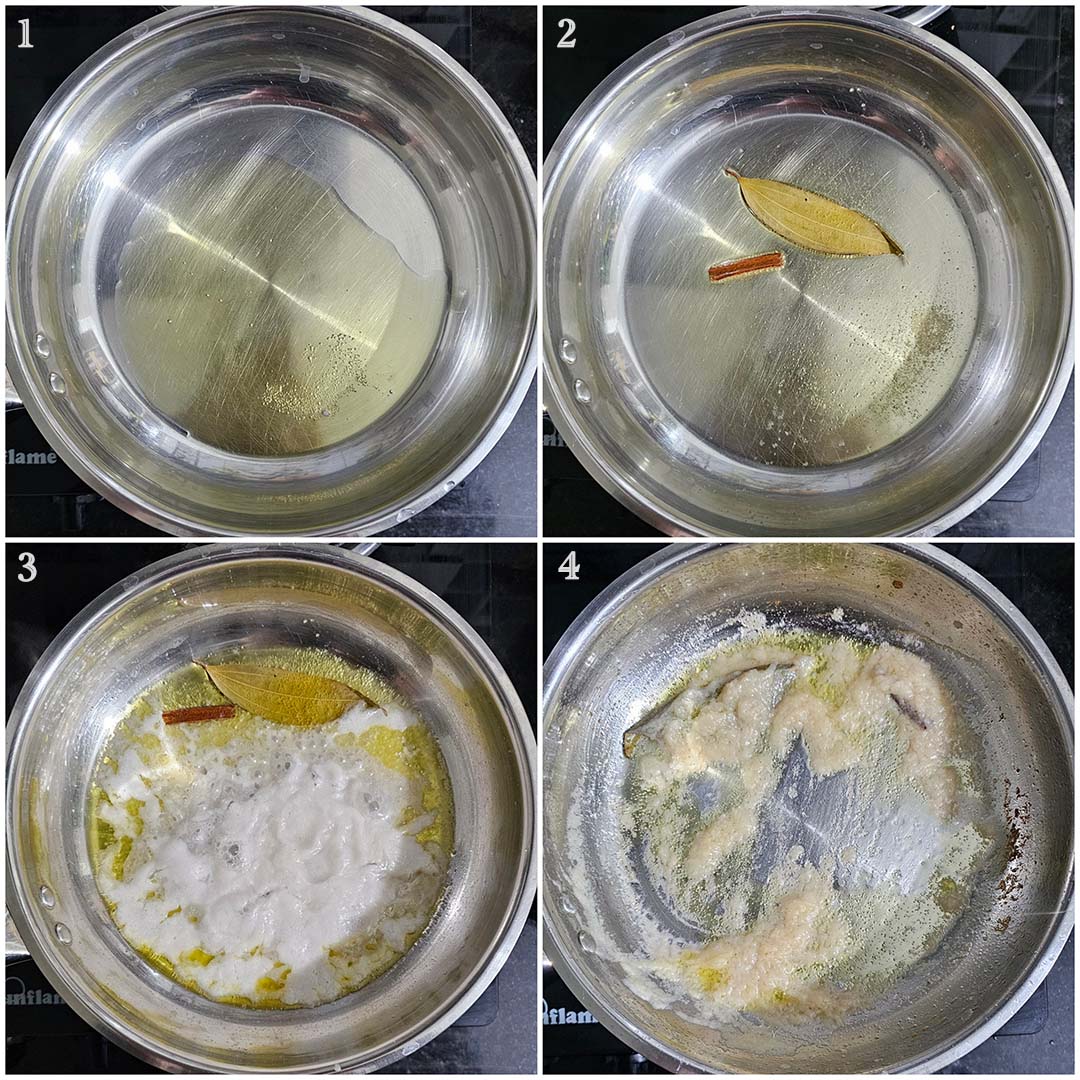
Step 4:
Add grated ginger (or ginger paste) and cook for another 1-2 minutes till onions turn slightly golden in colour.
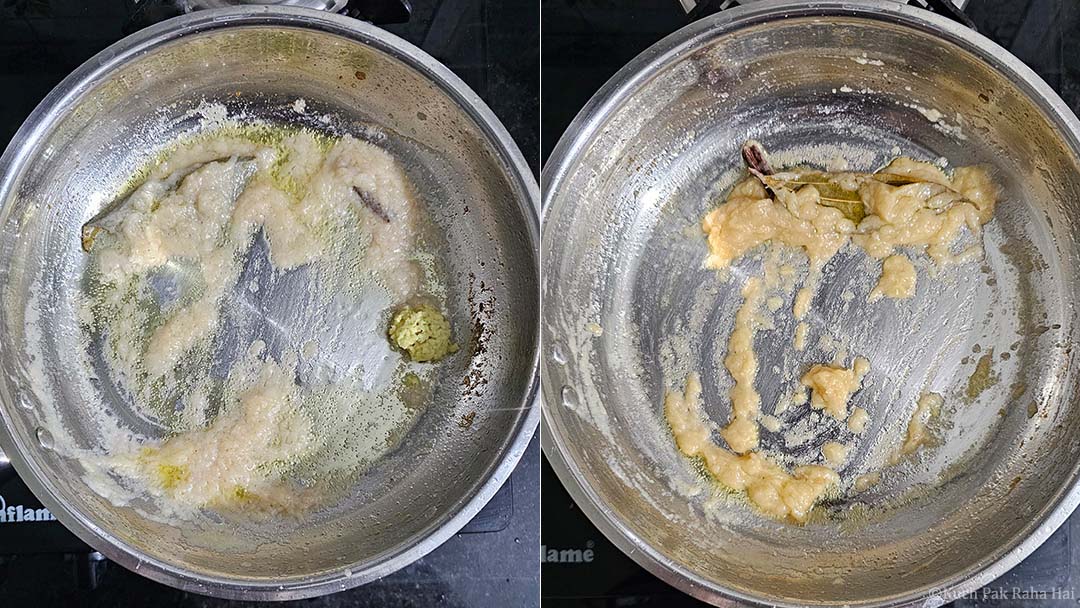
Step 5:
Blend the tomatoes and green chillies together in a blender jar. Add it along with tomato puree in cooked onions. Cook till the mixture becomes thick and glossy.
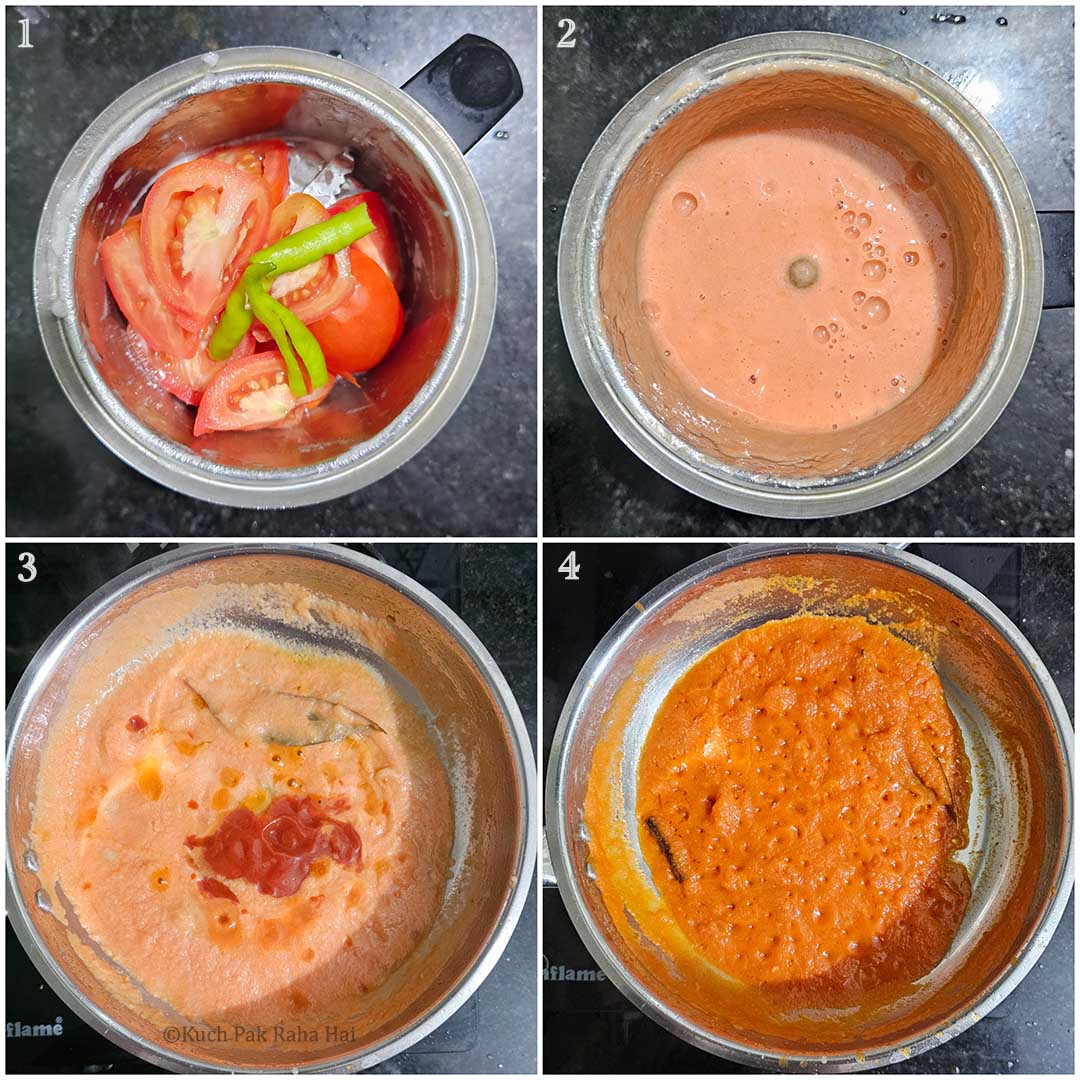
Step 6:
Add cumin powder, coriander powder, red chilli powder and garam masala and cook the masala mixture till it thickens up and releases its fat. Stir in between.
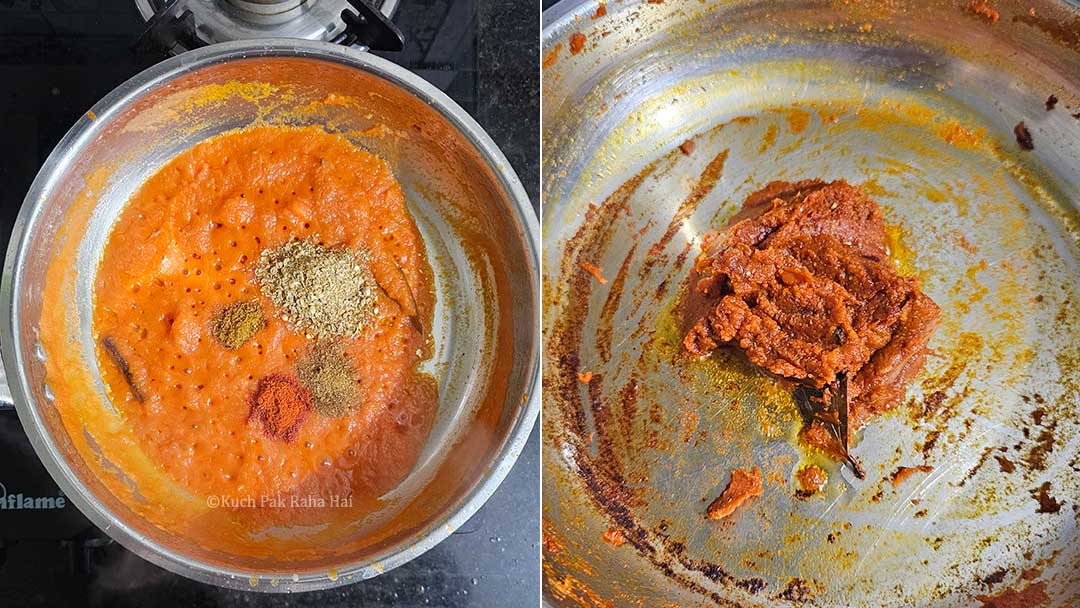
(Tip: If the mixture starts to sticking to the pan, turn the flame to low and add 1-2 tsp water. Continue stirring till it comes together as shown in image above.)
Step 7:
Add around 1 cup water and mix well. Remove whole spices at this step.
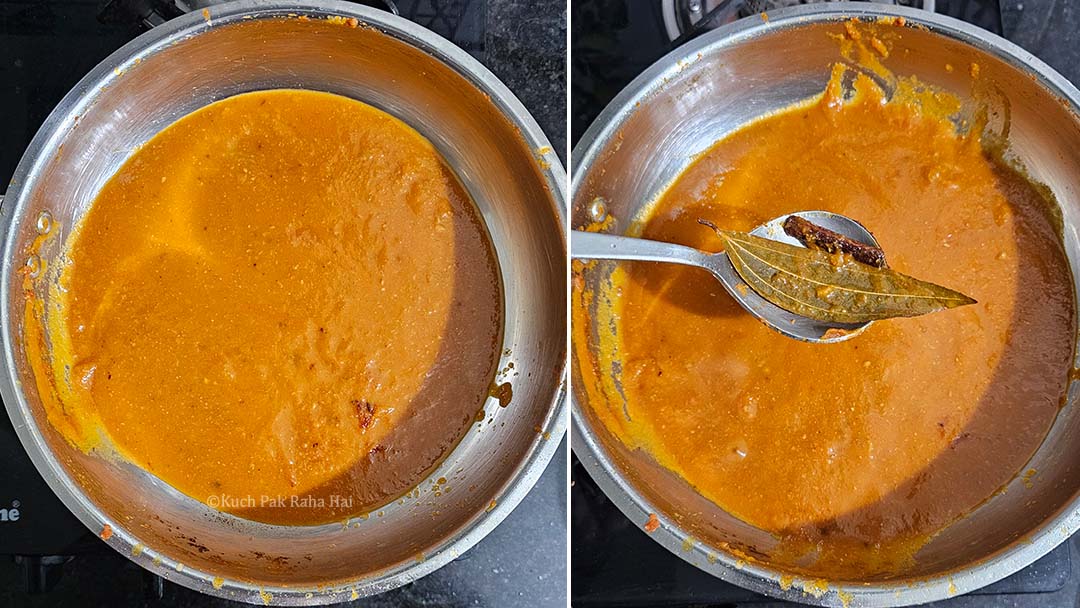
Step 8:
Add cooked lentils to the pan and mix well. Slightly mash them using a masher or spoon while adding more water if required. Bring them to boil first and then simmer. Add kasuri methi, dollop of butter, 1 tbsp cream and mix again. Let the lentils simmer for 10-15 minutes and stir in between.
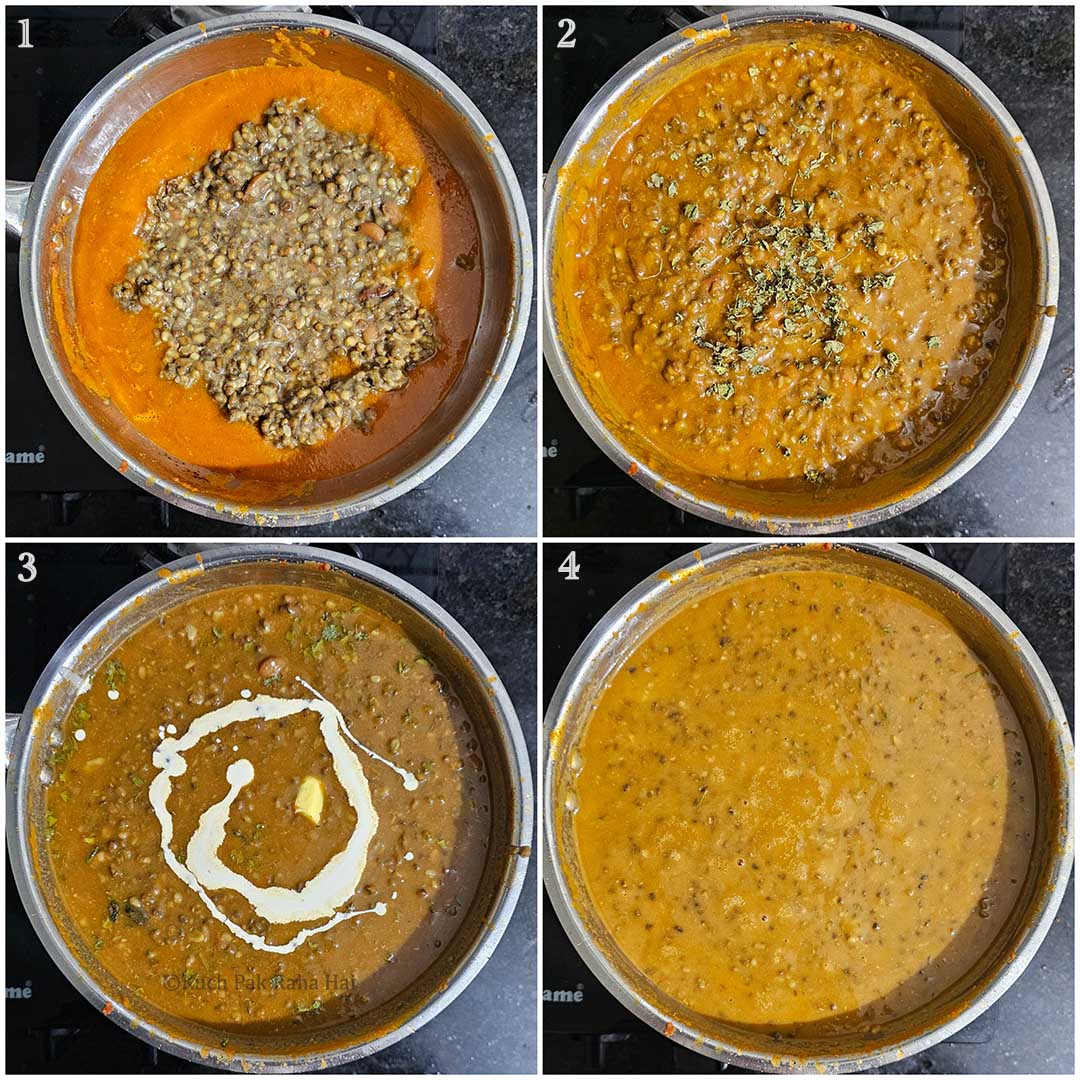
Step 9:
Add 2 tbsp cream more and mix again. Simmer for 15 minutes more. If you have time, it is better to simmer it for upto 60 to 90 minutes (while stirring in between). Slow cooking gives this lentil creamier texture and helps in absorbing flavours. Adjust the consistency of dal by adding more water if required.
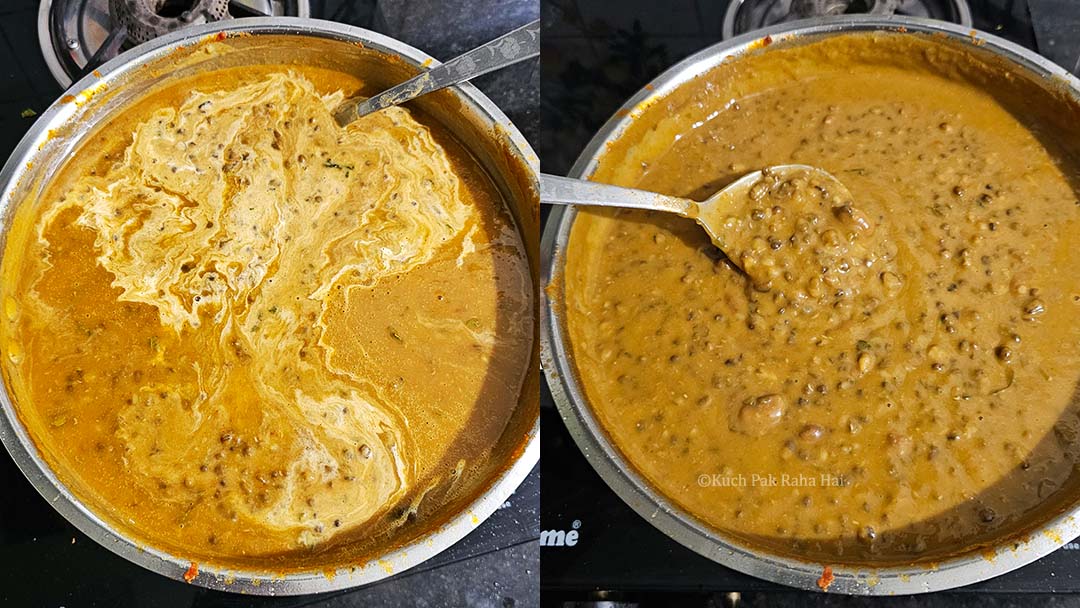
Step 10:
Taste and adjust salt as per your taste. Garnish with more cream and chopped coriander (cilantro) before serving. Enjoy it hot with tandoori roti or garlic naan.
Tips:
- You can cook the lentils a day in advance and store in fridge.
- Any leftover dal can easily be stored in fridge for 2-3 days. To reheat it, add a splash of water or milk and heat in microwave or in a pan on stovetop.
- If you are looking for side dishes for dal makhani and naan, then do checkout the recipes below:
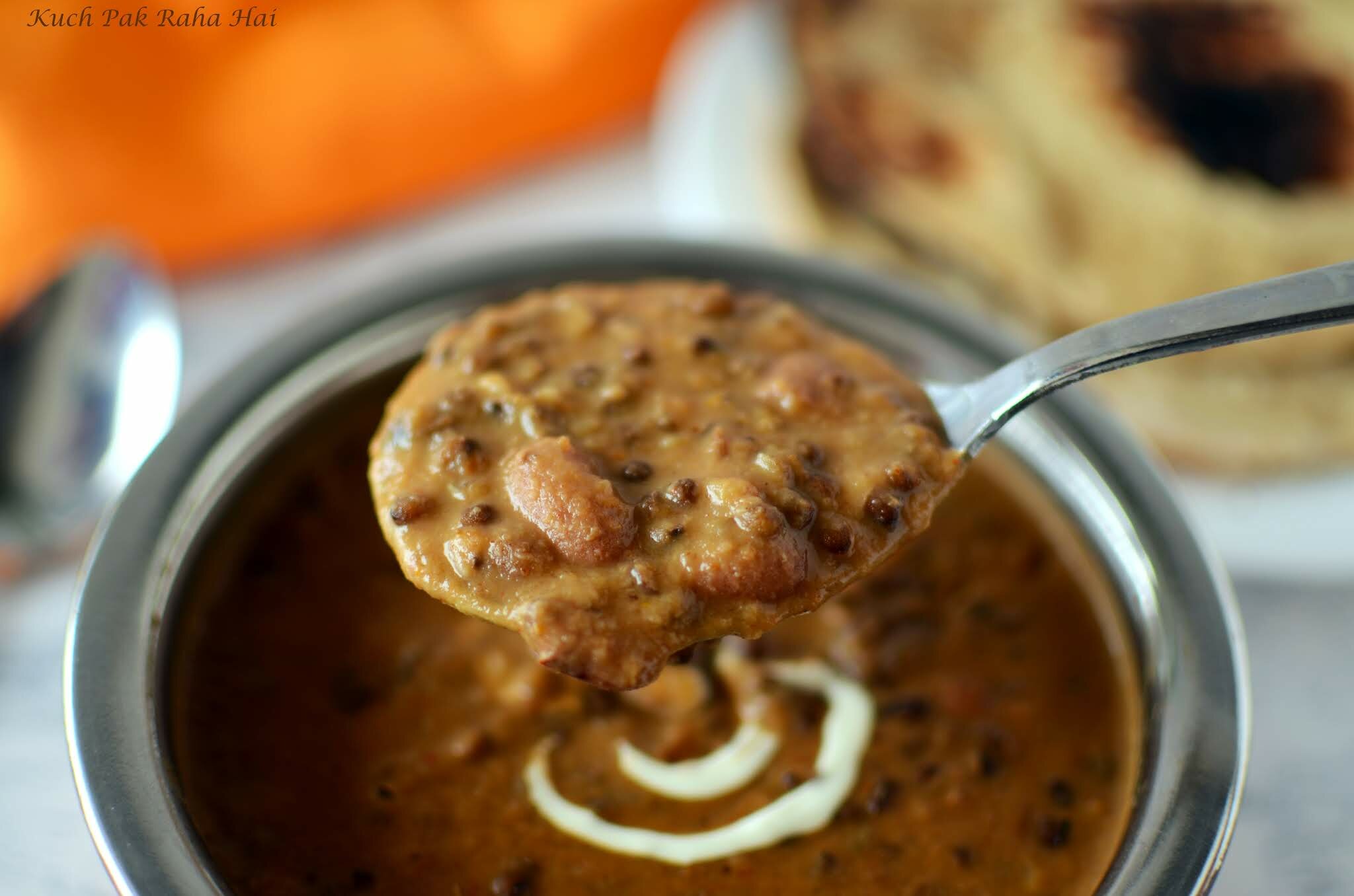
If you try this dal makhani recipe & share pics on social media, then don’t forget to tag on Facebook, Instagram or use #kuchpakrahahai.

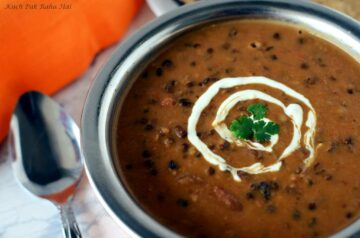

The look and presentation is superb…it looks so tempting that i will be trying it very soon
Thank you so much 🙂